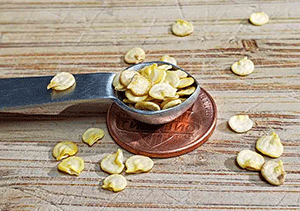Germinating bell pepper seeds can be an exciting yet sometimes frustrating experience for gardeners. These vibrant vegetables are not only delicious but also a fantastic addition to any garden. To maximize your success and speed up the germination process, there are several key techniques to consider.
Other Topics You Might Like
Helpful Products You Might Like

VIVOSUN Durable Waterproof Seedling Heat Mat

Back to the Roots Organic Potting Mix

Flexzilla Heavy Duty Garden Hose
"(Paid Links)" 
Selecting Quality Seeds
The first step to successful germination is selecting high-quality seeds. Look for seeds that are fresh and from a reputable source. Older seeds may have lower germination rates, which can prolong the waiting period. If possible, check the seed packet for a "packed for" date to ensure you're using seeds that are still viable.

Pre-soaking Seeds
One effective method to speed up germination is pre-soaking the seeds. This involves placing the seeds in warm water for about 12 to 24 hours before planting. The warm water helps to soften the seed coat, which can encourage quicker sprouting. Be cautious not to soak them for too long, as excessive moisture can lead to mold or rot.
Using the Right Soil

Choosing the right soil mix is crucial for quick germination. A well-draining seed-starting mix, ideally lightweight and sterile, is best. Look for mixes that contain peat moss, vermiculite, or perlite. These components help retain moisture while allowing for adequate drainage. Avoid using garden soil, as it can contain pathogens and weed seeds that might hinder growth.
Maintaining Optimal Temperature
Bell pepper seeds germinate best in warm conditions. The ideal temperature for germination is between 70°F and 85°F (21°C to 29°C). If you live in a cooler climate, consider using a heat mat to maintain a consistent temperature. This extra warmth can significantly speed up the germination process.
Providing Adequate Moisture
Keeping the soil consistently moist, but not soggy, is vital for seed germination. After planting, gently mist the surface of the soil with water. You can cover the seed tray with a plastic dome or plastic wrap to create a humid environment, which can help keep moisture in. Be sure to check daily to avoid over-saturation.
Using Grow Lights
If you’re starting seeds indoors, using grow lights can enhance the germination process. Bell pepper seeds need light to germinate effectively. Position the lights about 2 to 4 inches above the seedlings and keep them on for 12 to 16 hours a day. This not only provides the necessary light but also helps to maintain warmth.

Timing Your Planting
Timing is everything when it comes to germinating bell pepper seeds. Start seeds indoors about 8 to 10 weeks before the last expected frost date in your area. This allows the seedlings ample time to grow strong before being transplanted outside.
Transplanting

Once the seedlings have developed a few sets of true leaves and the outdoor conditions are suitable, you can transplant them into larger pots or directly into your garden. Ensure that you harden them off first by gradually introducing them to outdoor conditions over a week to prevent shock.
Conclusion
Germinating bell pepper seeds quickly involves a combination of quality seeds, pre-soaking, optimal soil, temperature, moisture, and light conditions. By following these steps, you can enjoy a thriving garden of bell peppers sooner than you might think. With a little patience and care, you'll be rewarded with a bountiful harvest that adds color and flavor to your culinary creations. Happy gardening!
